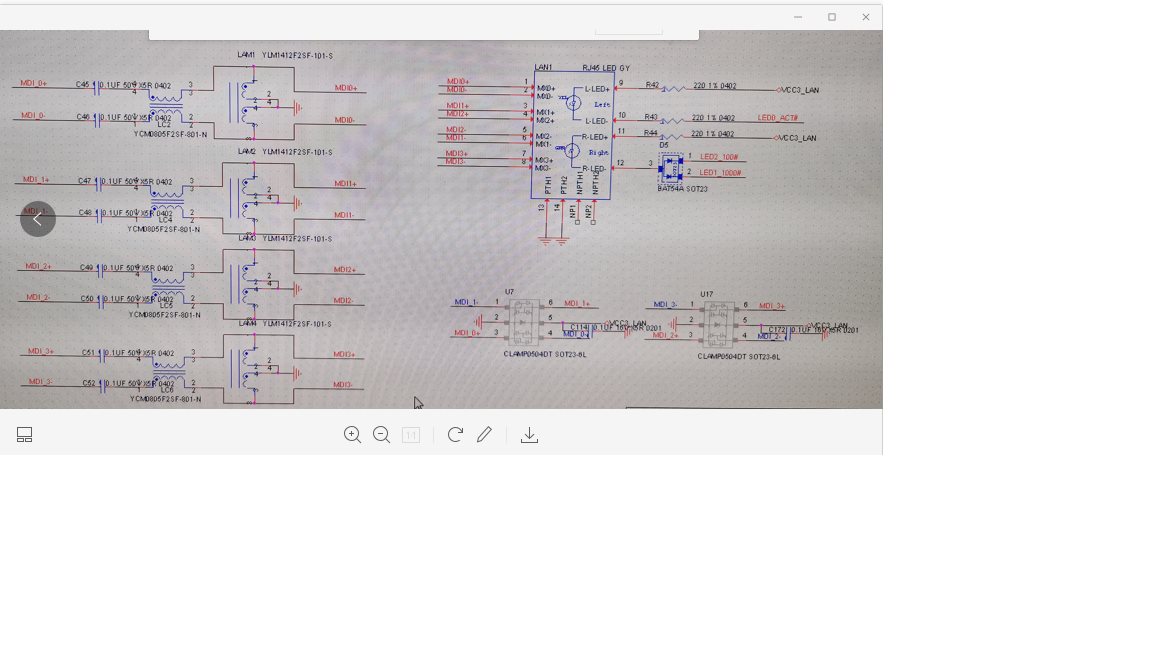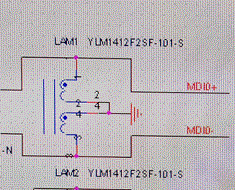Recently, a problem was found during Poe test. When the tps23861 is connected to some network ports that are not PD devices, the VPWR voltage will be pulled to the ground, resulting in abnormal protection of the back-end power board. After inquiring the network port circuit of this equipment, it is found that the common mode inductor is used to directly ground. But network port equipment manufacturers think their circuits are normal. So is there something wrong with TI's circuit. This makes me wonder. The following is the POE circuit of Ti and the network port equipment circuit, please help to analyze and confirm
This is ti's recommended circuit
My understanding is from the circuit analysis VPWR circuit voltage is always there, TP1 point is always 48V voltage, TP2 point is through the control of tps23861 and MOS transistor, the voltage control change.
But the circuit of network port is like this
Through the common mode inductance, the VPWR voltage is directly to ground.





